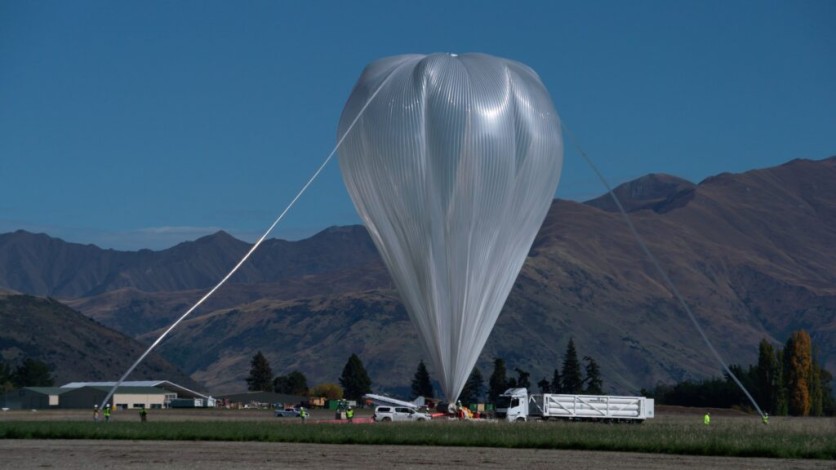After an impressive journey spanning 39 days and 14 hours, NASA's Super Pressure Balloon Imaging Telescope (SuperBIT) has successfully completed its global flight test.
Launched from Wānaka Airport in New Zealand, which serves as NASA's long-duration balloon program launch site, the mission concluded on Thursday, May 25, at 9:27 a.m. EDT.
The flight, regarded as the program's most successful to date, saw the balloon maintain a stable float altitude in the stratosphere, marking a significant achievement for NASA's Balloon Program Office.

Long-duration Balloon Flight
Debbie Fairbrother, the chief of NASA's Balloon Program Office at the Wallops Flight Facility, expressed her satisfaction, stating, "Achieving long-duration balloon flight through day and night conditions is an important goal for our program and the science community, and this flight has moved the needle significantly in validating and qualifying the balloon technology."
To ensure a safe landing, the balloon operators from NASA's Columbia Scientific Balloon Facility in Palestine, Texas, executed flight termination commands at 8:37 a.m. EDT on May 25.
As a result, the 18.8-million-cubic-foot balloon swiftly separated from the payload, deflating rapidly, and descended under a parachute.
It landed in an unpopulated area located 66 nautical miles northeast of Gobernador Gregores, Argentina. NASA collaborated with Argentine officials throughout the mission and is currently in the process of recovering the balloon and payload.
In its impressive 40-day journey, the super pressure balloon completed a remarkable five full circuits around the mid-latitudes of the Southern Hemisphere.
Retaining a float altitude of approximately 108,000 feet, the balloon ventured into the southern regions, posing potential challenges in terms of power supply due to limited sunlight exposure.
Consequently, the decision was made to conclude the flight safely by executing a land crossing, providing an opportunity to recover the balloon and payload.
Debbie Fairbrother expressed her pride in the team's accomplishments, stating, "I could not be prouder of the team for conducting a safe and successful flight, and the science returns from SuperBIT have been nothing short of amazing."
What's Next for the Balloon Program?
Looking ahead, NASA's Balloon Program has scheduled a science mission launching from the Columbia Scientific Balloon Facility in July. The Wallops Flight Facility in Virginia oversees the agency's scientific balloon flight program, which conducts 10 to 15 flights annually from various launch sites worldwide.
Peraton, the operator of NASA's Columbia Scientific Balloon Facility in Texas, provides essential services, including mission planning, engineering, and field operations for NASA's scientific balloon program.
Over the course of 40 years, the CSBF team has successfully launched over 1,700 scientific balloons. Meanwhile, the fabrication of NASA's balloons is handled by Aerostar.
Related Article : [UPDATE] Dead NASA Satellite to Crash Into Earth! Should You Be Worried? Here are RHESSI's Re-Entry Details

ⓒ 2025 TECHTIMES.com All rights reserved. Do not reproduce without permission.




